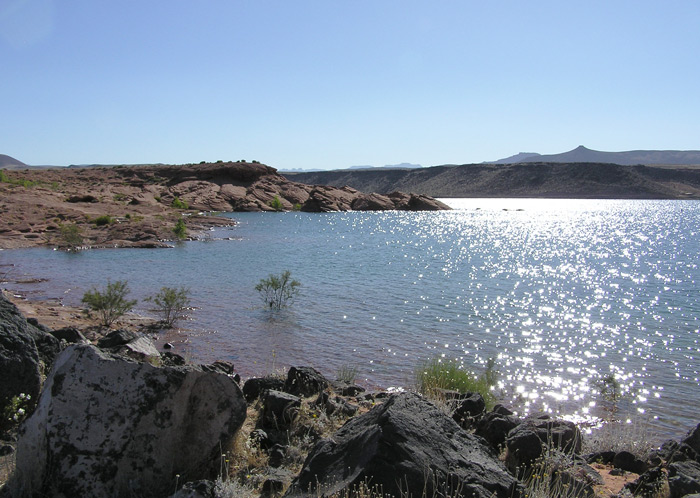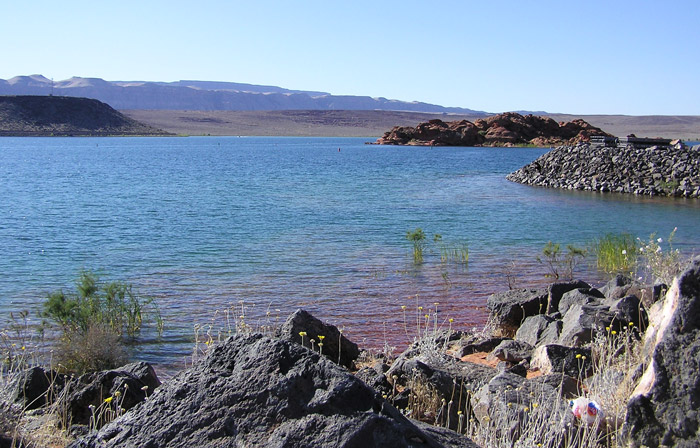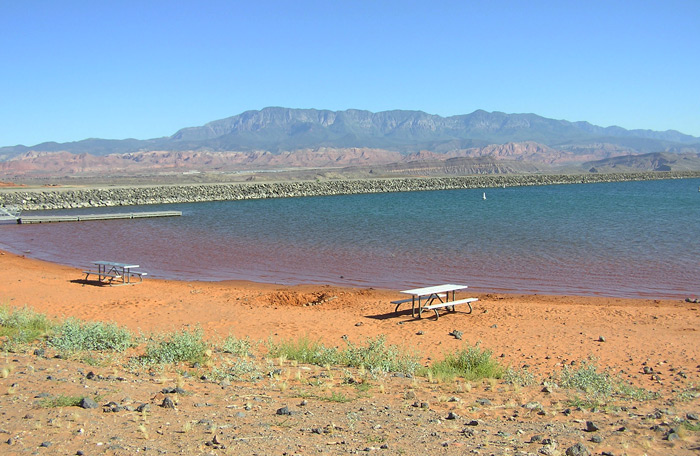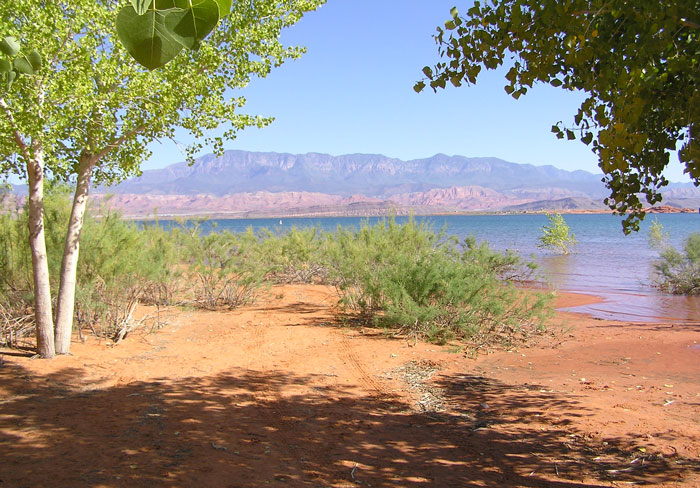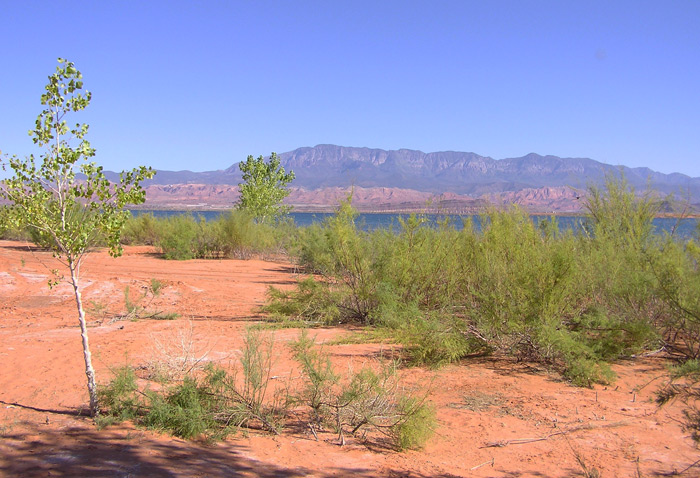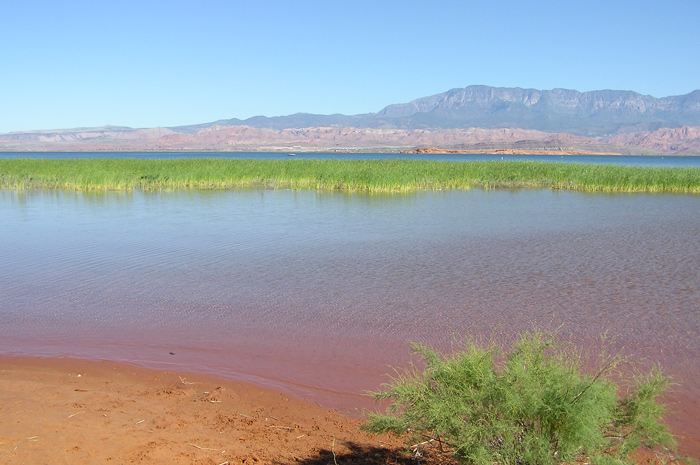~ Submitted by Pamela Wheeler
Description: Sand Hollow is a
warm water reservoir
created in 2003. The south and east sides of the reservoir have
shallow water that is
gradually developing into some marshy habitat. The boat ramp and some of the
nearby islands are also good places to check while you are there. The reservoir
attracts a variety of waterfowl and shorebirds, and the adjacent desert areas
are good places to look for desert birds.
Directions: While on I-15, take exit 16, towards Hurricane. Travel for
four miles and turn right at the light onto Turf Sod Road and follow the road
south until it curves to the east and the entrance to
Sand Hollow State Park. Follow the paved road to reach a
parking area, or turn right
onto a dirt road just past the entrance station that circles the south and east
sides.
Good Birds: Look for unusual gulls mixed in with the
Ring-billed
Gulls, and during migration, watch for unusual shorebirds foraging
with Black stilts, Spotted Sandpipers Snowy Plover and
American Avocets. Forster's Terns can be found here in the spring and
fall, along with the occasional Caspian and
Black Tern. In the winter Bald Eagles and Osprey visit occasionally.
Common Loons, Eared, Clarkes, Western, and
Pied-billed Grebes are seen most of the year. Common ducks include
Ruddy, Ring-necked, Lesser Scaup,
Northern Pintail, Redhead,
and Canvasback to Ducks, and Northern Shovelers. Burrowing owls have been known
to nest here.
Rare Birds: White Winged Scoter,
Black scoter,
Long-tailed Jaeger, Trumpeter
Swan,
Lesser Black-backed Gull,
Herring Gull, Glaucous
Gull, Mew Gull, Thayer's
Gull, Sabine's Gull,
Red-throated Loon,
Neotropic Cormorant, Garganey,
Lark Bunting, Dunlin,
Black-bellied Plovers, Sanderlings, Horned Grebe.
Other: This area requires a $10 daily fee per vehicle-even to scan the
reservoir for five minutes. The best way to access the park is with a state
parks pass. Early morning is best, especially from spring to fall when boating
and fishing activity is high. Spring and fall migration are the most productive
times of year to visit.
The sewer ponds you pass on Turf Sod Road on your way into the reservoir are
often worth checking, as is nearby Quail Creek Reservoir (which does not charge
a fee unless you enter the picnic/boat ramp area).
eBird Data: |
Sand Hollow Reservoir & SP
|
|
